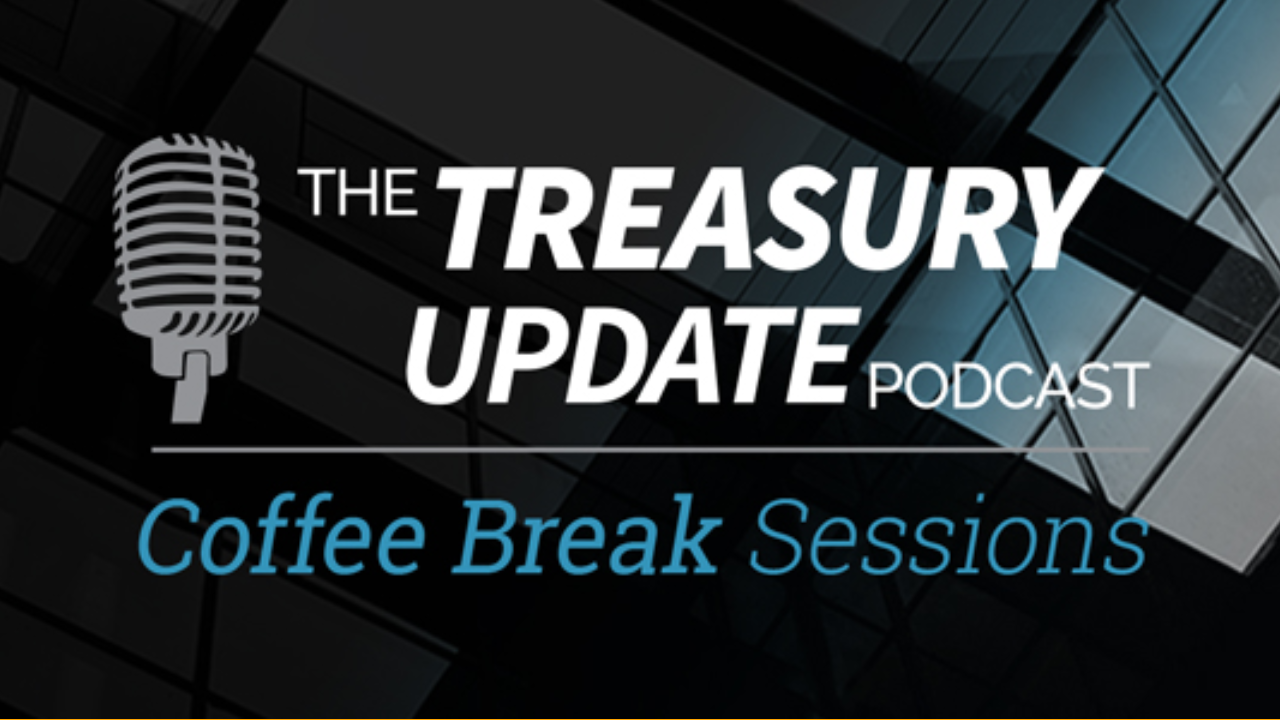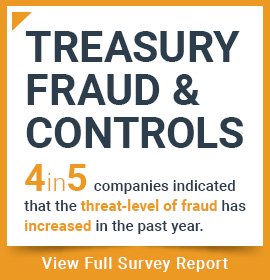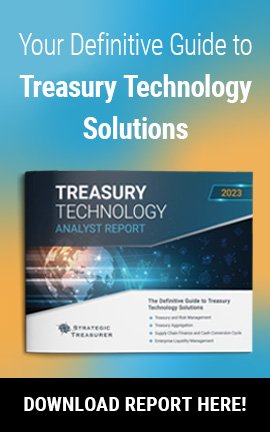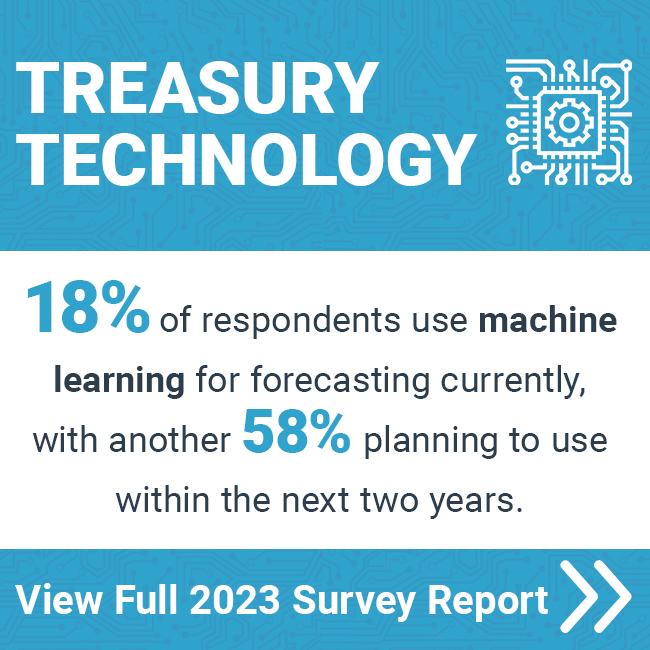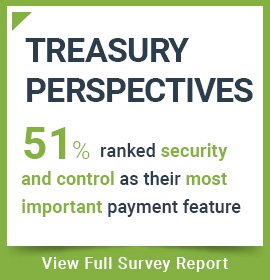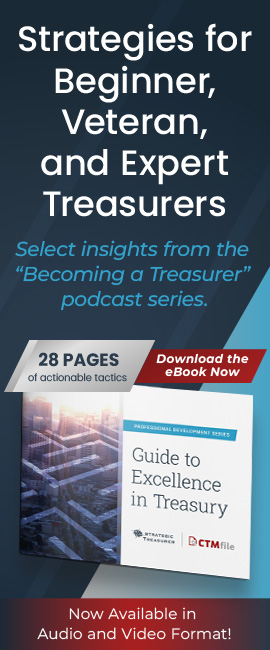
Session 18
What are KPIs?
What are KPIs? Coffee Break Session Host Alexa Cook catches up with Melody Hart, Senior Consultant at Strategic Treasurer, to discuss key performance indicators. They dive into the meaning and elements of KPIs and how they are typically used across organizations today. Listen in and learn a little bit about KPIs.
Host:
Alexa Cook, Strategic Treasurer


Speaker:
Melody Hart, Strategic Treasurer


Episode Transcription - CBS Episode 18 - What are KPIs?
Alexa Cook:
Hey guys, welcome to the Treasury Update podcast Coffee Break Sessions, the show where we cover foundational treasury topics and questions in about the same amount of time it takes you to drink your coffee. This is your host, Alexa Cook, and I am joined, again today with Melody Hart, consultant with Strategic Treasurer. Welcome back, Melody.
Melody Hart:
Thank you, Alexa, I’m glad to be here.
Alexa Cook:
So today, we’re going to be talking about what are KPIs. Just to start, what does KPI even stand for?
Melody Hart:
It stands for key performance indicator.
Alexa Cook:
I just feel like when you hear people talking about KPIs in corporations, a lot of people might wonder what are they, what do they mean? Do you want to give us a little bit of background on that?
Melody Hart:
Sure. So KPIs have been used as management tools for a lot of years now. They provide an objective measurement of the results of important business processes. They’re a way of setting metrics for a department’s performance. So for instance, if you’re a manufacturing on your manufacturing line, some of the KPIs could include how many good units are produced per hour or day or month. Another could measure how much scrap there is from the manufacturing process, with less scrapping within the measurement and being better, or it could be days without injury, could be another. So they are things that you can measure how you’re doing.
Alexa Cook:
How does this then apply to the treasury department?
Melody Hart:
Well, KPI adoption is accelerated in corporate treasuries from the aftermath of the global financial crisis. Stakeholders, such as board of directors, investors, industry analysts, increasingly look for measurements of key treasury activities to give them a view into the liquidity and the operation of the company. They look at the company’s evolving cash position, its funding situation, or the status of its financial risk exposure. So KPI is a powerful and effective analytical extension to treasury management’s reporting. It provides objective insight into treasury’s performance, and it’s important to select the right set of treasury KPIs in order to contribute directly to enhancing the quality of treasury management.
Alexa Cook:
You said it’s important to select the right set. I guess that leads me right into my next question, which is what types of KPIs are companies developing or using?
Melody Hart:
Well, they fall into a couple of categories. So KPIs can be strategic or they can be tactical. For a strategic KPI, you could decide to track Treasury’s contribution to the completion of a new project, or the achievement of a specific objective. These KPIs are developed typically on an as-needed basis, like for a project or objective, and they cease being relevant once it’s completed. But an example of a tactical KPI would be to track the efficiency of processes, minimization of error rates, achievement of target returns on assets, those types of things. Those are the activities that are recurring and continue throughout the organization’s existence.
Alexa Cook:
So then, I guess, between strategic and tactical or just KPIs in general, are there any guidelines that would be important when we’re developing KPIs and then communicating them effectively, both inside and outside of treasury?
Melody Hart:
Yeah. First, you have to be very focused. When you’re going to develop your KPIs, you should limit the number of metrics to no more than eight. Otherwise, it can become really unwieldily. I mean, that’s a general, it can vary by company. Second, you really need to use graphics. That helps you facilitate showing the effectiveness of treasury and how it’s performing against benchmarks. A picture is worth a thousand words. It’s much more effective if you use graphics. Your message on the metrics needs to be concise. Make sure it’s clear and easy to understand.
Alexa Cook:
That’s pretty simple. Keep them clear, keep them focused and make sure they’re easy to understand. So then to expand on that, how are companies determining what KPIs should be used?
Melody Hart:
Well, you look at items that are key for a department or business unit. Then you turn what’s important to measure, to show the function of the department. I mean, if there’s no KPIs, how do you measure your effectiveness? So it’s best designed collaboratively with all members of your team, determining which KPIs are most relevant to a specific need of the treasury environment and which are the most valuable and supportive the evolution of treasury. It’s essential to adapt a practical number of KPIs because if you deliver too many, it’s unlikely the results will be used effectively, and the improvement project will lose commitment, if it’s a project. The optimum set for a given treasury is dependent on multiple factors. Most notably, the commercial nature of the business, including business structures, cyclical patterns, the scale of corporate leverage or surplus. A highly leveraged domestic utility company, for example, would require a different set of KPIs compared with a cash rich export company that has a high proportion of foreign currency revenues.
Melody Hart:
So there are some obvious business sector differences. Given the high level companies, let’s say non investment grade or acquisitive, they’re going to be very focused on debt. So you would probably have more debt metrics than some of the other metrics in treasury. If you’re a retailer, then cash management is key. So you’ll have more cash management. You might have some of the debt metrics of foreign exchange metrics, but you definitely have a lot of cash management, so it’s very dependent on the type of company. So the selection process should reflect corporate organization, stakeholder priorities. The results should translate into a policy that would be relevant and effective for the industry and for the company’s specific condition.
Alexa Cook:
I like how you summarize that up at the end, making sure it’s just specific and almost simple for the stakeholders to understand. What are some of the common KPIs that companies are using, or people might be used to seeing?
Melody Hart:
I won’t give a comprehensive list because there are so many you could use, but some typical ones like cash, visibility percentage. Companies are trying to see, give visibility of cash around the world, and that’s sometimes not the easiest thing to do, so you might measure how much you have visibility to. You might have … A frequent one is percentage forecast error by business unit. So you’re developing your cash forecast or your business forecast, and you want to make sure that there’s a feedback loop on the errors and know that there’s … are you improving on your forecasting capability? Minimal cash balance is one, cost of funds above benchmark, could be your investment portfolio liquidity, bank services, hedge ratio, counterparty limit usage, any number of things, even number of days taken to close accounting books could be one.
Alexa Cook:
So then is it difficult to set up those KPIs and the data, or should KPIs be selected and change over time? Because I know you said that there’s not really a comprehensive list because there’s so many of them. So because there’s so many, are they varying or what’s the story there?
Melody Hart:
The reason there’s so many is because companies are different. But many KPIs can require a substantial and robust data collection, retention, analysis effort to translate them into dependable results that can be confidently reported to management and that can be used as a basis to monitor and manage and chart your improvement. Ideally, they may be able to be tracked within your treasury management system, and that should be used to its fullest extent if you can. To the extent they can’t be tracked, it’s very important, if they can’t be tracked in a TMS or a system, it’s important to keep them easily able to be tracked manually if they can’t be in a system. So that means that you might have to simplify a KPI that you cannot track that easily in a system. So it’s probably not advisable though, to keep changing KPI sets because that makes it difficult to build up a robust set of statistics for effective benchmarking and would probably be an unpopular complication for the treasury team. Yeah, if there are KPIs to track, a specific project or objective, those will change as the projects or objectives are completed.
Alexa Cook:
So then once we have these measurements and all of these objectives set up and we’re maybe on a cadence of reporting the KPIs, what are we doing with this information?
Melody Hart:
Well, some treasuries might initially feel concerned that the introduction of KPIs could have an adverse effect on morale on their team. They might see it as a big brother tactic adding to the stress of a demanding treasury role by setting up and monitoring personal targets that may or may not be, in practice, be reasonable or useful. But successful KPI programs are invariably introduced sensitively, with emphasis on their underlying purpose being the strategic improvement of treasury operations through measuring the outcomes of the processes, not on micromanaging individuals. Periodically, you have to assess the relevance of the metrics, or you may revise program targets upward. You’ve exceeded your metrics, you can revise it to upward. Whatever the reason for changes, it’s important to communicate any changes to your audience.
Alexa Cook:
Okay, that makes sense. So then if I’m recapping everything that we’ve covered today, starting at the top with what KPI means, those are key performance indicators, which are then the objectives or measurements used for management. I believe you said that the right KPIs should be set and be selected. So those can be either strategic or tactical, and you had said to keep them focused. I think you said maybe eight would be used. There could be more or less, but eight, I think, was the good number. Then KPIs typically use a lot of data. So we would try to automate those wherever we could with a system or a TMS, or keep them simple when they needed to be manual. Was there anything else that I’m missing in our wrap-up?
Melody Hart:
It’s really important that all the stakeholders are involved in creating the KPIs. So all of your treasury teams involved, but then it’s also good to touch base with the people who you will be giving the reports to, because they might have a view of how they would like to see that.
Alexa Cook:
That’s true. Make sure it’s readable by the people receiving the reports. All right, well, thank you, Melody. I appreciate you joining us, again, on today’s podcast. To our listeners, as always, we love hearing from you. So please feel free to reach out at podcast@strategictreasurer.com, and you can join back every first and third Thursday of the month for a new episode of Coffee Break Sessions. Thanks again for joining me today, Melody.
OUTRO:
This podcast is provided for informational purposes only, and statements made by Strategic Treasurer LLC, on this podcast are not intended as legal, business, consulting, or tax advice. For more information, visit and bookmark strategictreasurer.com.
Related Resources
Want access to more great content? Subscribe to Strategic Treasurer on YouTube!
A part of the Treasury Update Podcast, Coffee Break Sessions are 6-12 minute bite-size episodes covering foundational topics and core treasury issues in about the same amount of time it takes you to drink your coffee. The show episodes are released every first and third Thursday of the month with Special Host and Treasury Consultant Alexa Cook of Strategic Treasurer.


